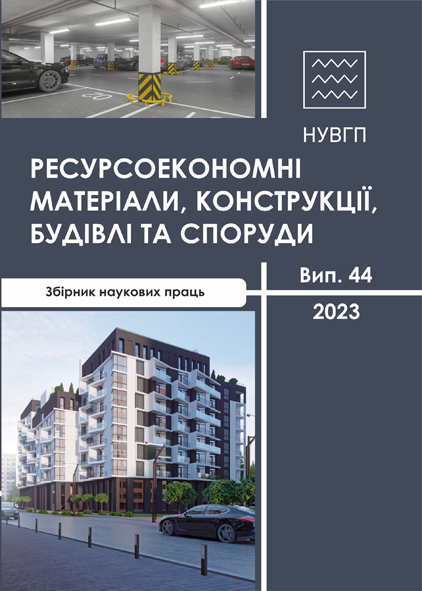RECOMMENDATIONS FOR THE DESIGN SOLID AND GLUELAMMED WOOD BEAMS WITH PASSIVE AND PRE-STRESSED COMBINED REINFORCEMENT
DOI:
https://doi.org/10.31713/budres.v0i44.15Abstract
Wood is one of the most needed natural materials on the planet. At the same time, it is a renewable material. For more than one century, wood has been used as a building material. In modern construction, most structures are used as processed wood. Modern production allows using high-tech equipment to produce glued wood of various sizes. It is the use of wood in glued construction that allows you to expand the range of its use. It is this version of wooden structures that is used in massive structures such as halls, bridges, and stadiums. However, technological growth should not stand still, so there is a need to increase the rigidity and reliability of these structures. The best way to increase stiffness and reliability is to create a composition with stiffer, stronger and more reliable materials. Previously, we gave the definition of the stress-strain state of bending wooden elements with passive reinforcement and the definition of tangential stresses in wooden beams taking into account the nonlinearity of material deformation. In previous works, the method of modeling the work of wooden beams with sequential loading was described. The simulation of cross-sections of flexural wooden elements under different options and percentages of reinforcement was described. for prestressed elements and without prestressing. Also, our work was aimed at determining the deflections of bending wooden elements with various reinforcement options and with prestressing. However, taking into account the description of the work of reinforced and non-reinforced wood, no recommendations were provided for the design and calculation of the bearing capacity of such structures. The work describes the design of wooden bending elements based on the main previously published scientific works. The article also touches on the problem of the strength of bending wooden elements under the action of maximum normal stresses, tangential stresses and maximum bending deflection. Based on the theoretical and practical studies, recommendations were given for the design of bending elements from solid and glued wood with passive and pre-stressed combined reinforcement. It is established that determination of strength and design of wooden beams have a similar step-by-step verification for limit states of the first and second groups. At the same time, it is necessary to calculate the stress-strain limit state of the cross-section and establish the dependence of the curvature of the cross-section on the action of the external moment.

